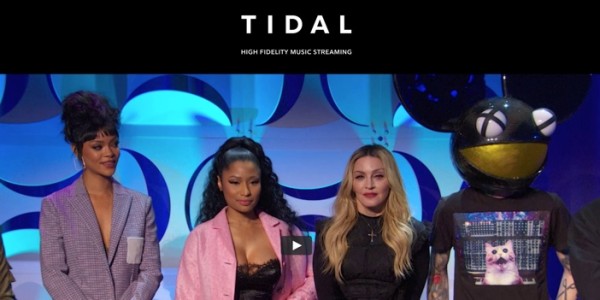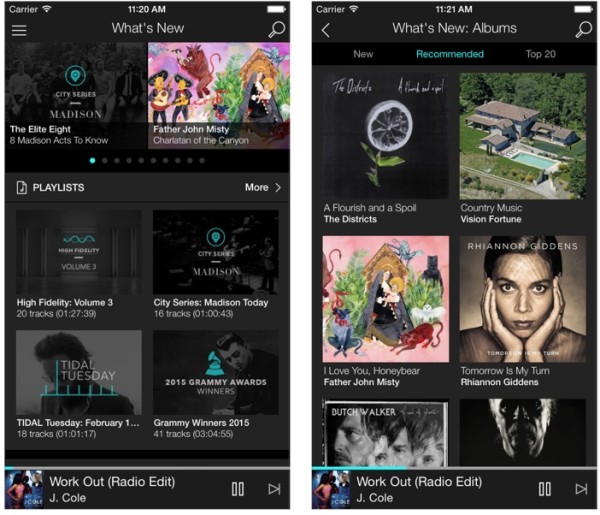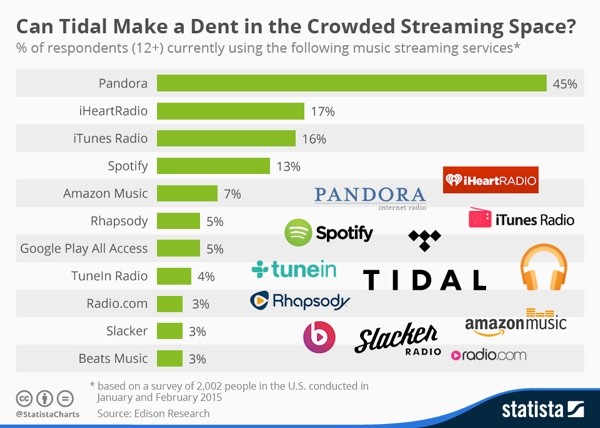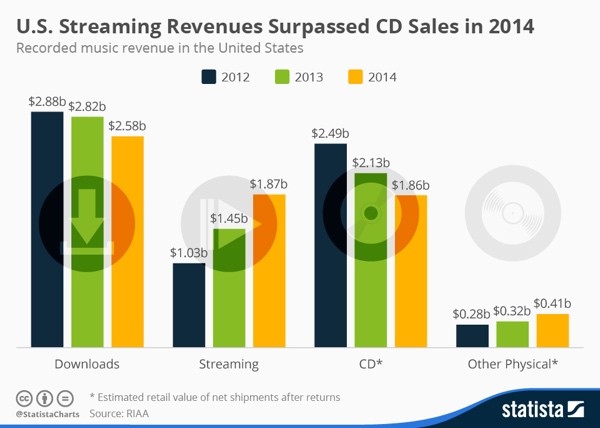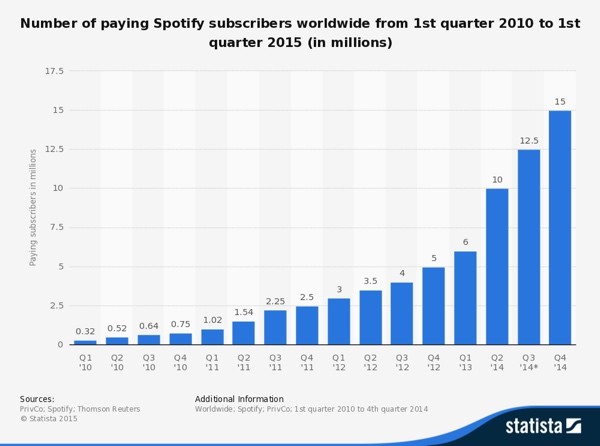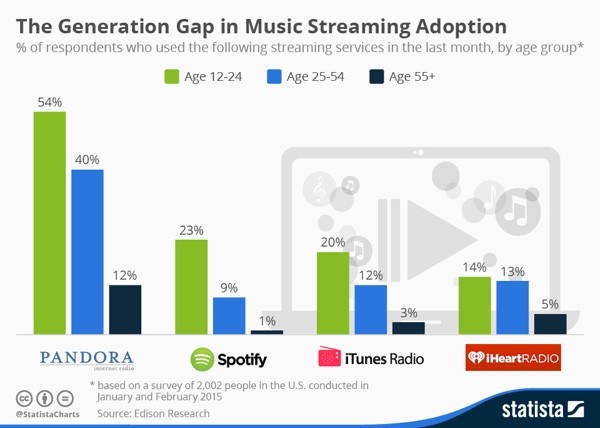Tidal enters the crowded music streaming scene
Last week, some of the biggest music industry stars came out on stage to announce the launch (though it was actually a relaunch) of Tidal, a new music streaming service that supports a lossless, high quality format aimed at audiophiles. The announcement involved stars such as Madonna, Jay-Z, Kanye West and Jack White, who signed a declaration to ‘take back the music industry’.
Music streaming is starting to become almost as popular as download services, and it’s generally expected that its revenues will surpass the more traditional method of buying digital music in the next few years.
Tidal joins the music streaming scene
The force behind Tidal is none other than rapper Jay-Z, who acquired Aspiro, Tidal’s parent company for a cool $56 million. He says that Tidal will offer artists transparency (something which other services lack, apparently), and subscribers will benefit from exclusive content provided by the co-owners and endorsers.
 In terms of pricing, it’s currently being offered for $19.99, which is around twice the cost of its competitors, however a ‘Premium’ subscription which offers all the same features except the lossless streaming (in FLAC format) will also be available for $9.99.
In terms of pricing, it’s currently being offered for $19.99, which is around twice the cost of its competitors, however a ‘Premium’ subscription which offers all the same features except the lossless streaming (in FLAC format) will also be available for $9.99.
Can Tidal make an impact on the crowded streaming space? As there are already dozens of companies competing for the money of music fans. Aside from Pandora, most of these services have unfortunately failed to separate themselves from the crowd, offering almost the same features and benefits.
The following chart illustrates the state of the US streaming music scene:
Music streaming revenue surpasses CD sales in 2014
The rise of music streaming services is not surprising given the convenience, and relatively inexpensive prices for an all-you-can-eat subscription. And many of those listeners are using smartphones to consume music at home or on the go (Tidal in fact offers both the lossless stream format and a more regular compressed version for mobile users to save data charges).
Last year, a watershed moment occurred for the music industry – for the first time ever, music streaming services actually generated more revenue than CDs in the US. Since the 1990s, CDs have been the most important source of income for the music business, but were dethroned back in 2012, the same year in which digital downloads reached their peak.
According to the Recording Industry Association of America, CD sales amounted to $1.86 billion last year while streaming services such as Spotify, Pandora or iTunes Radio contributed $1.87 billion to the music industry’s total of almost $7 billion. Revenue from permanent downloads amounted to $2.58 billion, continuing the downward trend as consumers turn to streaming services instead. Within three years, the number of paid streaming subscribers more than tripled from 1.8 million to 7.7 million.
The recorded music industry in the U.S. now generates roughly two thirds of its revenue from digital sources, indicating how drastically the music market has changed since the beginning of the 21st century.
Who are the streaming leaders?
As shown in the previous charts, Pandora by far leads in the streaming music space, but outside the US it’s perhaps Spotify that is the best known service.
As of December 2014, Spotify had 15 million paying subscribers worldwide, up from 6 million paying subscribers in the first quarter of 2013.
Spotify allows users to browse through a catalogue of music, licensed through multiple record labels, and create and share playlists with other users. Additionally, users are able to listen to music for free with advertisements or are also given the option to purchase a subscription to allow for unlimited ad-free music streaming.
As of 2013, Spotify had a smaller user base compared to Pandora, accumulating only 24 million users compared to 69.5 million from its competitor. However, Spotify’s popularity continued to grow, particularly in Europe, and is considered one of the most popular services globally, with over 4.5 billion hours of music streamed collectively in 2013.
The generation gap
Despite the popularity of streaming music, both on mobile devices and PCs, there is apparently a huge generation gap in the adoption of streaming services.
According to Edison Research, 77% of respondents polled aged 12-24 and 61% of those aged 25-54 had streamed music within the month preceding the survey, whereas only 26% of those aged 55 and above had done so.
The steep drop-off in usage from the age of 55 can be observed across all of the most popular music services, as the chart below from Statista.com illustrates.
Final Words
Today’s streaming services are undoubtedly making a dent in the revenues of download services. Pandora, iTunes Radio, iHeartRadio and Spotify are the industry leaders today, but it remains to be seen whether upstarts like Tidal can make an impact – perhaps their hand-curated playlists and music recommendations can help them stand apart from the crowd.
In future, Apple’s iTunes service is expected to incorporate elements of Beats Music, the company it purchased last year. So far, there are few details about how Apple may choose to bolster its own music streaming and digital download services, but the company may have an uphill struggle against the industry’s stalwarts that already have millions of subscribers.
Ultimately, it’s clear that music streaming is the future of digital music, and it surely won’t be long before downloads go the way of CDs…
